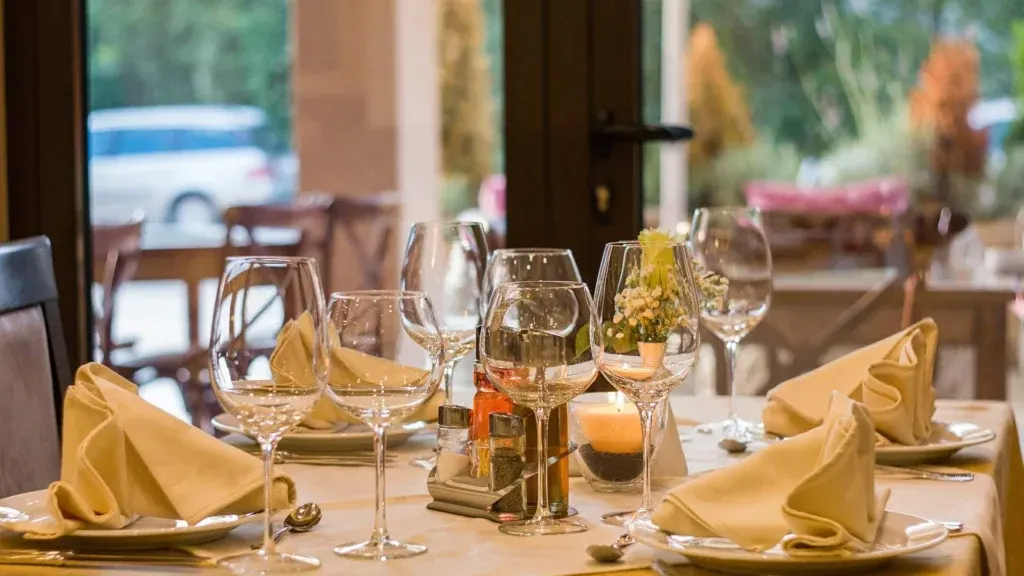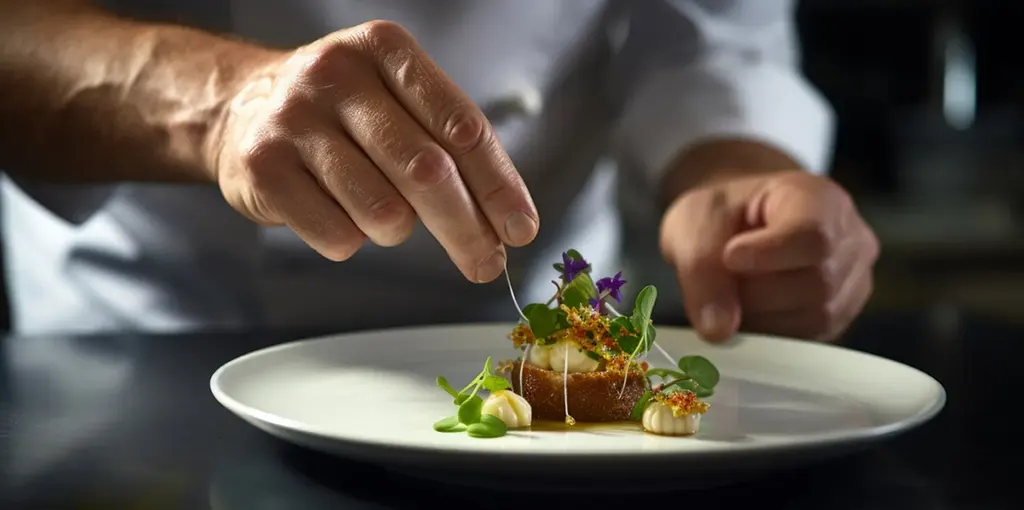Every now and then, you’ll hear the phrase “Michelin-starred restaurant” whispered in awe. It’s not just a badge of honour; it’s a golden ticket to the culinary galaxy, a recognition that restaurants around the world aspire to reach. But what makes a restaurant worthy of the starry spotlight? Let’s take a deep dive into the prestigious Michelin–Star system and discover how these coveted stars are earned.
What is a Michelin Star?
First, a little background: It all started with something quite unexpected—tyres. In 1900, Michelin, a French tyre company, launched a travel guide to encourage people to drive more and, of course, wear out their tyres. As a bonus, they included lists of hotels, restaurants, and maps to help drivers along their journey. Fast forward to 1926, and the Michelin Guide began awarding stars to restaurants. It wasn’t until 1931 that the guide adopted the three-star rating system we know today.
What Do Michelin Star Ratings Mean? What to Expect?
There are three levels of Michelin Stars:
- One Star: “A very good restaurant in its category.” This means the restaurant offers a high level of quality in the food and experience but is not necessarily in the realm of fine-dining excellence.
- Two Stars: “Excellent cooking, worth a detour.” These restaurants have mastered the art of cooking, and it’s clear in the dishes they present. The detour, however, might require a bit of extra effort, whether it’s a longer drive or an evening set aside for the culinary adventure.
- Three Stars: “Exceptional cuisine, worth a special journey.” This is the highest honour given to the restaurants that are redefining fine dining. It’s not just a meal, it’s an experience that transcends expectations.
How Are Restaurants Awarded a Michelin Star?
The process is as mysterious as the Michelin inspectors themselves, who work in secret, visiting restaurants anonymously. However, we do know that they follow a very specific set of guidelines when evaluating a restaurant. Here’s a closer look at what they focus on:
1. Quality of Ingredients
Michelin inspectors pay close attention to the ingredients used in each dish. Is everything fresh, seasonal, and of the highest quality? A dish made with passion, the right technique, and top-notch ingredients is the key to impressing inspectors. Even the simplest of ingredients, when used thoughtfully, can elevate a dish to something remarkable.
2. Skill in Preparation and Cooking
There’s no room for sloppy work here! The preparation and cooking techniques must be impeccable. Whether it’s a delicate soufflé or a perfectly cooked steak, the technical prowess of the chef is a huge part of what earns that star.
3. Personality of the Chef in the Cuisine
A Michelin Star isn’t just about flawless technique — it’s about individuality. How does the chef’s personality shine through in the food? Does the dish tell a story, evoke emotion, or surprise in a delightful way? The inspectors are looking for that spark, that unique element that makes the food feel personal, original, and exciting.
4. Value for Money
Believe it or not, the value for money is considered when awarding stars. While fine dining can be pricey, Michelin inspectors assess whether the experience is worth the price tag. A three-course meal that leaves you feeling delighted, satisfied, and like you’ve gotten your money’s worth? That’s the goal.
5. Consistency Between Visits
Michelin inspectors can visit a restaurant several times to ensure that the level of quality remains the same every single time. They’ll want to see that the same excellence exists not only for one visit but over the course of multiple experiences.
6. Ambience and Service
The overall dining experience plays a huge role from the moment you walk in the door. Is the service warm and attentive? Is the ambience inviting, comfortable, and in harmony with the food? You could have a Michelin-worthy meal, but if the experience is marred by rude staff or a noisy atmosphere, it’s not going to make the cut.
How Restaurants Get Michelin Stars?
For a chef, earning a Michelin Star is like winning a gold medal in the culinary Olympics. To secure a Michelin Star, a restaurant needs to meet these overarching criteria:
- Craftsmanship: Chefs must demonstrate a mastery of techniques that elevate the ingredients and dishes.
- Memorability: The meal should be something you remember, making you want to return again and again.
- Innovation: Creativity is valued, but only when it enhances the dining experience. Michelin recognises chefs who push boundaries while maintaining impeccable flavour.
- Reputation: Word of mouth and recognition in the industry play a role in the restaurant’s evaluation.
Where You Can Find Michelin Guides?
Michelin Guides spans across numerous countries and cities worldwide, from London and New York to Tokyo and Hong Kong. As for Michelin inspectors, they’re anonymous and meticulous, dining just like any other guest but closely observing every detail — from soup temperature to service quality. They visit restaurants multiple times to ensure consistency, making the job both rigorous and rewarding!
Myths and Misconceptions About Michelin Stars
There are plenty of myths surrounding Michelin Stars, such as the idea that you can only earn one if you serve French cuisine, or that Michelin inspectors only visit expensive, white-tablecloth restaurants. In reality, Michelin inspectors value quality over formality. Street food can earn a star, and less formal dining spots can earn two or three. It’s not about the setting — it’s about the experience.
The Psychological Impact of Michelin Stars
Michelin Stars don’t just affect individual restaurants — they influence entire culinary scenes. When a restaurant earns a star, it sets a benchmark for others, elevating the overall quality of dining in the area. Cities like Tokyo and Paris have become culinary meccas thanks to the Michelin effect, attracting food lovers from across the globe.
For diners, it can create an aura of exclusivity. Earning a reservation at a Michelin-starred restaurant becomes a sought-after experience, a way to feel a connection to something special and exceptional. The allure of Michelin Stars elevates the dining experience into something more than just a meal; it becomes a status symbol, creating anticipation and excitement.
Michelin–Star Secret Menu Items
Did you know that many Michelin-starred restaurants offer “secret menu” items? These exclusive dishes are often reserved for VIPs or repeat customers who have a special connection with the chef. Secret menu items offer a glimpse into the chef’s creative process, providing a rare opportunity to taste dishes that are not on the regular menu. These hidden gems are part of the magic that makes Michelin dining an unforgettable experience.
Sustainability and Innovation in Michelin-Starred Restaurants
Many Michelin-starred chefs are pushing the envelope with sustainable practices, such as using locally sourced, organic ingredients and minimising food waste. The Michelin Guide is increasingly rewarding restaurants for their efforts in sustainability, encouraging the industry to think beyond the plate and consider the environment as part of the dining experience.
Are Michelin Stars Annual Awards?
Michelin Stars are not permanent awards — they’re renewed annually, meaning restaurants must continue to meet the stringent criteria every year to retain their stars. Restaurants that were once honoured may lose their stars if they fail to maintain their standards, while new establishments can earn their first star or even rise to greater heights. This dynamic nature of the Michelin Star system keeps the culinary world exciting and encourages continuous improvement, ensuring that each year, only the best restaurants shine in the guide.
What Happens When Restaurants Lose Their Michelin Star?
It’s not all sunshine and stars. Losing a Michelin Star can be a tough blow, both for the chef and the restaurant. However, it doesn’t mean the end of the road. Many restaurants bounce back, reevaluating their concepts and refining their offerings. The key is resilience and the ability to adapt and grow.
No Limit on Michelin Stars Awarded Each Year
There is no set limit on the number of Michelin Stars that can be awarded in any given year. However, earning a Michelin Star is no easy feat, and many restaurants do not receive one despite being considered strong candidates. Often, there are many contenders, but some fall short due to inconsistency. A restaurant may have a few standout dishes, but if the overall experience doesn’t remain consistently excellent across the board, it might miss out on a star. Additionally, some kitchens take longer to mature, requiring time to refine their techniques and develop a signature style. This is why Michelin Stars are so highly regarded!
Interviews with Michelin Star Chefs
We reached out to a few Michelin-starred chefs to understand what earning a star means to them:
- Chef Jean-Paul, Le Petit Bistro (France): “The Michelin Star is a dream realised, but it’s not just about the award. It’s about the journey of creating something that moves people. It’s a responsibility to your team, your ingredients, and your guests.”
- Chef Maria Lopez, La Cocina de Maria (Spain): “It’s humbling. Michelin Stars set the bar high, and we are always striving to improve, innovate, and maintain consistency. Every service, every plate—it has to be perfect.”
- Chef Taro Nakamura, Sushi Taro (Japan): “A Michelin Star is an acknowledgement of hard work and dedication, but it’s also a reminder that we’re only as good as our last meal. For me, it’s about continuing to push the boundaries of sushi.”
The Future of Michelin Stars
With the rise of food trends like plant-based cuisine, digital dining experiences, and the global influence of food culture, the Michelin Guide is constantly evolving. It’s likely that we’ll see more focus on sustainability, diversity in dining, and a shift towards recognising new culinary innovations. The future of Michelin Stars is bright, but we’re also bound to see exciting new directions in how restaurants are evaluated and celebrated.
The Chef’s Journey to Michelin Stardom: Dreams and Opportunities
Although it’s the restaurant that earns the Michelin Stars, the head chef is often seen as the driving force behind its success. They are the creative visionaries, the ones whose leadership, innovation, and culinary mastery shape the dining experience that ultimately earns such prestigious accolades. This is why many young chefs dream of one day leading a restaurant to Michelin Star status, knowing that achieving this level of excellence is a defining milestone in a chef’s career.
One of the best ways to begin this journey is by attending culinary school to build a solid foundation in the art of cooking and kitchen management. Institut Disciples Escoffier (IDE) offers an array of programs in cuisine, pastry, and bakery. These programs are designed to equip aspiring chefs with the skills, techniques, and entrepreneurial mindset needed to lead successful kitchens and eventually make their mark in the world of Michelin-caliber dining. For any chef, the path to Michelin Stars begins with education, passion, and relentless dedication. Get in touch today and take the first step toward your Michelin-Star journey!













